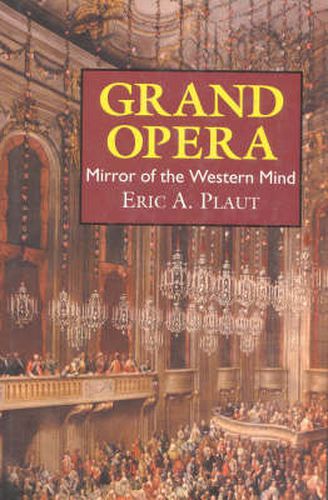Readings Newsletter
Become a Readings Member to make your shopping experience even easier.
Sign in or sign up for free!
You’re not far away from qualifying for FREE standard shipping within Australia
You’ve qualified for FREE standard shipping within Australia
The cart is loading…






Employing a remarkable combination of expertise in music, opera, and psychological insight, Eric Plaut explores the great operas and their composers from the time of the French Revolution to the onset of the First World War. He sees opera as the preeminent medium for expressing human willfulness, its characters driven by emotions of passionate intensity. The great composers of opera were also governed by their feelings and heavily influenced by the life of their time. Weaving together these social, psychological, and historical strains, Dr. Plaut investigates the meaning behind eighteen of the greatest operas, including Tristan and Isolde, Madame Butterfly, Tosca, Die Fledermaus, The Barber of Seville, Aida, Tales of Hoffmann, Fidelio, Lucia di Lammermoor, Carmen, Boris Godounov, Otello, Salome, and Faust. At the same time he looks into the lives of their composers, seeking those experiences and characteristics which help to explain both the opera in question and the composer’s larger body of works. The result is an unusually satisfying and perceptive view of grand opera, a book that will be essential for opera lovers and informative and entertaining for general readers.
$9.00 standard shipping within Australia
FREE standard shipping within Australia for orders over $100.00
Express & International shipping calculated at checkout
Employing a remarkable combination of expertise in music, opera, and psychological insight, Eric Plaut explores the great operas and their composers from the time of the French Revolution to the onset of the First World War. He sees opera as the preeminent medium for expressing human willfulness, its characters driven by emotions of passionate intensity. The great composers of opera were also governed by their feelings and heavily influenced by the life of their time. Weaving together these social, psychological, and historical strains, Dr. Plaut investigates the meaning behind eighteen of the greatest operas, including Tristan and Isolde, Madame Butterfly, Tosca, Die Fledermaus, The Barber of Seville, Aida, Tales of Hoffmann, Fidelio, Lucia di Lammermoor, Carmen, Boris Godounov, Otello, Salome, and Faust. At the same time he looks into the lives of their composers, seeking those experiences and characteristics which help to explain both the opera in question and the composer’s larger body of works. The result is an unusually satisfying and perceptive view of grand opera, a book that will be essential for opera lovers and informative and entertaining for general readers.